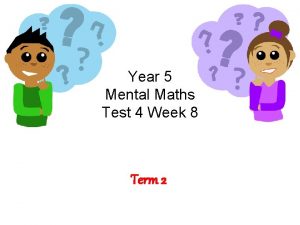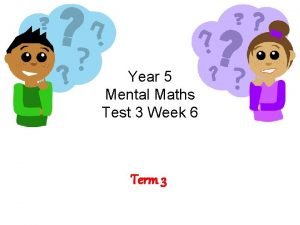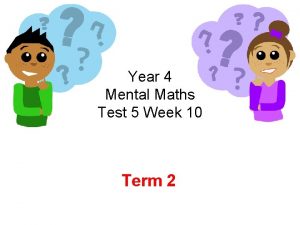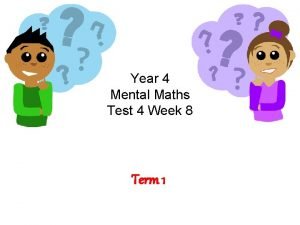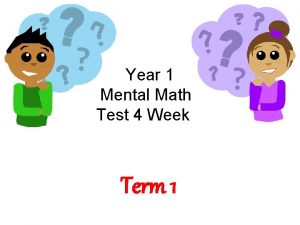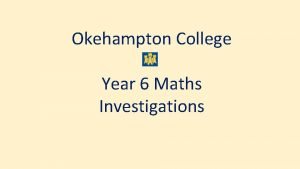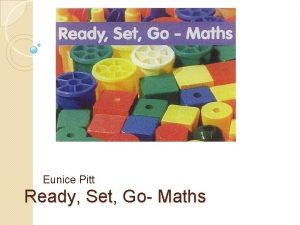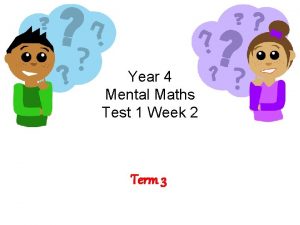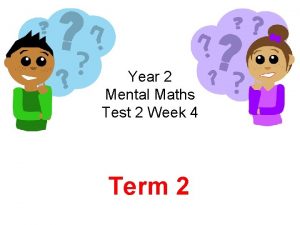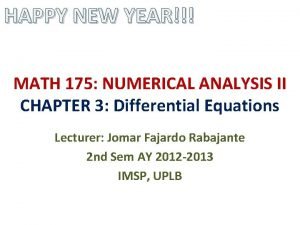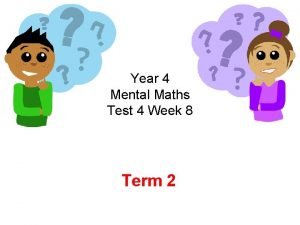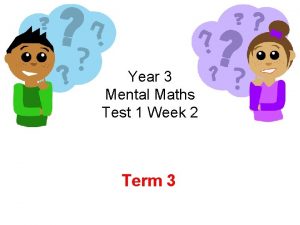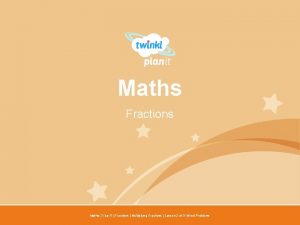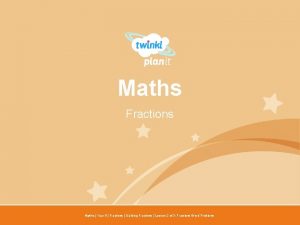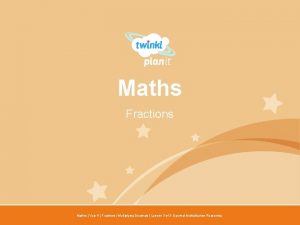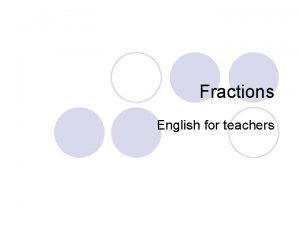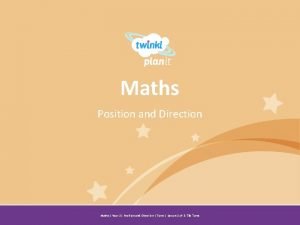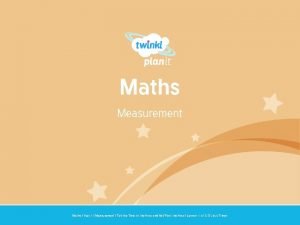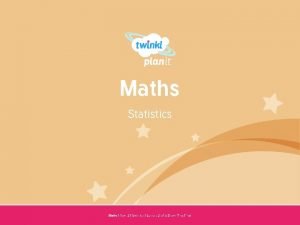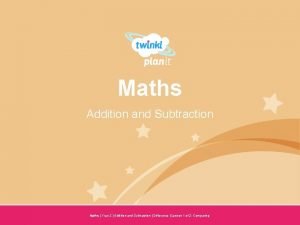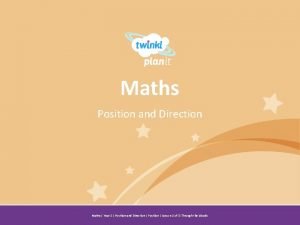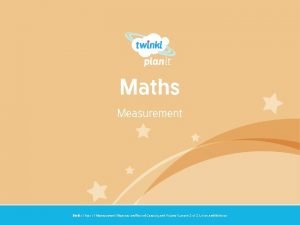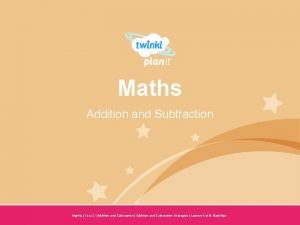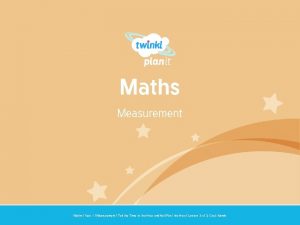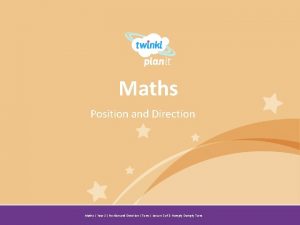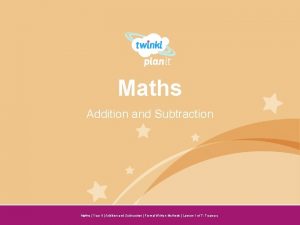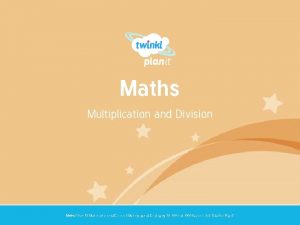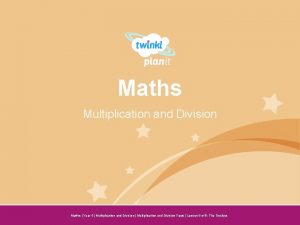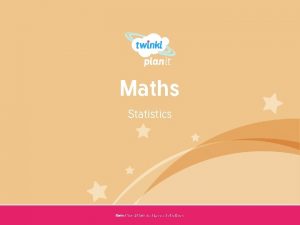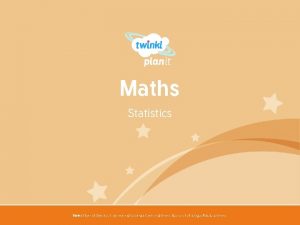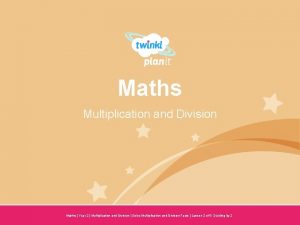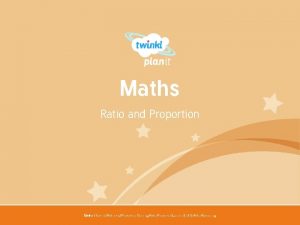Maths Fractions Year One Maths Year 6 Fractions


























- Slides: 26

Maths Fractions Year One Maths | Year 6 | Fractions | Multiplying Fractions | Lesson 3 of 3: Multiplying Fractions Reasoning


Aim • I can solve reasoning questions involving multiplying proper fractions. Success Criteria • I can break down complex problems into smaller steps. • I can use mathematical language to explain solutions to problems.

Guided Maths Question 1 Read this reasoning question carefully. Let’s highlight the important information and key vocabulary to show we understand the question.

Guided Maths Question 1 Next, let’s think about what we already know in order to help us answer the question correctly. Second, I know that when multiplying proper First, I can see that the fractions, I can multiply the fraction bar has been numerators together and divided into sevenths. multiply the denominators together. numerator × numerator denominator × denominator

Guided Maths Question 1 We are now ready to apply our learning to solve the question. Next, I can multiply the First, denominators together. numerators together.

Guided Maths Question 1 Finally, let’s check our answer.

Partner Maths Question 1 Working with a partner, use your reasoning skills to answer this question. Show Answer

Guided Maths Question 2 Read this reasoning question carefully. Let’s highlight the important information and key vocabulary to show we understand the question.

Guided Maths Question 2 Next, let’s think about what we already know in order to help us answer the question correctly. Give four different pairs of proper fractions that equal one third when multiplied together: I Iknow thatthe thedenominators numerators know that fractions willto I the know that, in awill proper of of the twotwo fractions need fraction, multiply together numerator to together make must the be need tothe multiply thanthe denominator of numerator the fraction one toless make of third. the fraction one third. × × = 4 321 12 9 6 3 = 1 3

Guided Maths Question 2 Now we are ready to apply our learning to solve the question. Give four different pairs of proper fractions that equal one third when multiplied together: × 1 2 2 3 × × 2 3 2 4 = = 2 4 6 6 4 3 12 6 × × = 1 2 2 3 = = 1 3 4 12 6 18

Guided Maths Question 2 Finally, let’s check our answer with the information and key vocabulary in the question. Give four different pairs of proper fractions that equal one third when multiplied together: × = 1 3

Partner Maths Question 2 Working with a partner, use your reasoning skills to answer this question. Give four different pairs of proper fractions that equal one fifth when multiplied together: × = 1 5 Show Answer

Guided Maths Question 3 Read this reasoning question carefully. What is the answer to this fraction calculation in its simplest form? 1 2 + 2 5 × 2 3 = Let’s highlight the important information and key vocabulary to show we understand the question.

Guided Maths Question 3 Next, let’s think about what we already know in order to help us answer the question correctly. I know that I will need to multiply thethat numerators I know that when I add I know any I know that I may need to together multiply the fractions, and Iinneed to make calculation a bracket has simplify the answer. denominators to the denominators the same. to be donetogether first. find the answer. 1 2 + 2 5 What is the answer to this fraction calculation in its simplest form? 1 2 × 2 + 5 2 3 × = 2 3 =

Guided Maths Question 3 Now we are ready to apply our learning to solve the question. What is the answer to this fraction calculation in its simplest form? 1 First, I need to make the denominators of the fractions inside the brackets the same. 2 1 × 5 2 × 2 5 2 × 5 5 × 2 10 + + + Both of the denominators can change to 10. 2 × 5 = 10 5 × 2 = 10 Remember, what you do to the bottom, you must also do to the top! 2 5 4 10 × 2 3 = = 9 10

Guided Maths Question 3 Now we are ready to apply our learning to solve the question. What is the answer to this fraction calculation in its simplest form? 1 First, Finally, Next, I will I need multiply to simplify the numerators together. denominators the answer. together. 9 10 × 2 3 2 = + 18 30 2 5 = × 3 5 The greatest common factor of 18 and 30 is 6: 3 × 6 = 18 5 × 6 = 30 2 3 =

Guided Maths Question 3 Finally, let’s check our answer with the information and key vocabulary in the question. What is the answer to this fraction calculation in its simplest form? 1 2 + 2 5 × 2 3 = 3 5

Partner Maths Question 3 Working with a partner, use your reasoning skills to answer this question. What is the answer to this fraction calculation in its simplest form? 2 5 + 1 3 × 3 4 = 11 20 Show Answer

Reasoning Practice Have a go at independently solving the reasoning questions on your activity sheet.

Reasoning Practice Answers Did you correctly answer the first reasoning question? 1. Shade the shape to show the answer to the calculation: Show Answer

Reasoning Practice Answers Did you correctly answer the second reasoning question? Give four different pairs of proper fractions that equal one sixth when multiplied together: × = Show Answer 1 6 Give four different pairs of proper fractions that equal two sevenths when multiplied together: × = Show Answer 2 7 Give four different pairs of proper fractions that equal four ninths when multiplied together: × = Show Answer 4 9

Reasoning Practice Answers Did you correctly answer the third reasoning question? What is the answer to this fraction calculation in its simplest form? 3 1 + 8 8 × 2 5 Show Answer What is the answer to this fraction calculation in its simplest form? = 2 1 + 5 8 × 1 3 Show Answer What is the answer to this fraction calculation in its simplest form? = 3 1 + 7 3 × 3 4 Show Answer =

Reasoning Practice How confident do you feel about the types of question that we have worked on today? Show me using a silent signal:

Aim • I can solve reasoning questions involving multiplying proper fractions. Success Criteria • I can break down complex problems into smaller steps. • I can use mathematical language to explain solutions to problems.

 Act 1 scene 1 hamlet
Act 1 scene 1 hamlet One empire one god one emperor
One empire one god one emperor One one one little puppy run
One one one little puppy run One king one law one faith
One king one law one faith One empire one god one emperor
One empire one god one emperor One ford behaviors
One ford behaviors See one do one teach one
See one do one teach one One price policy
One price policy Twelfth night speeches
Twelfth night speeches See one do one teach one
See one do one teach one One vision one identity one community
One vision one identity one community Graphic organizer with the aims of la liga filipina
Graphic organizer with the aims of la liga filipina Dr frost algebraic fractions
Dr frost algebraic fractions Mental maths year 5
Mental maths year 5 Mental maths questions year 5
Mental maths questions year 5 Wigan lea mental maths
Wigan lea mental maths Year 4 mental maths test
Year 4 mental maths test Year 3 mental maths test
Year 3 mental maths test Wigan mental maths year 1
Wigan mental maths year 1 Maths mastery year 3
Maths mastery year 3 Nrich maths investigations
Nrich maths investigations Go maths
Go maths Year 4 mental maths tests
Year 4 mental maths tests Year 2 mental maths test
Year 2 mental maths test Equation of happy new year
Equation of happy new year Mental maths year 4
Mental maths year 4 Mental maths year 3
Mental maths year 3













